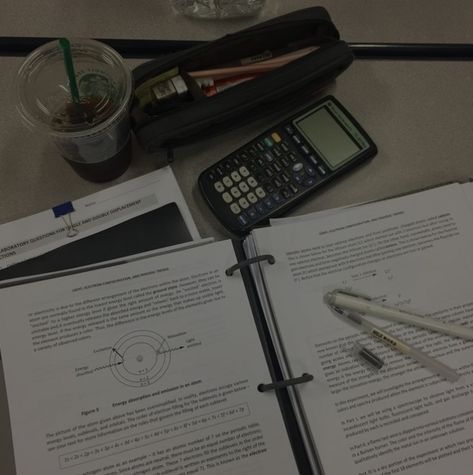Crush By Richard Siken // Two Girls In Bed By Henri De Toulouse-Lautrec // “Washing Machine Heart”






Crush by Richard Siken // Two Girls in Bed by Henri De Toulouse-Lautrec // “Washing Machine Heart” by Mitski // David Altmejd // Wasted by Marya Hornbacher // Embrace Painting by Peter Wever
More Posts from Astrorelations and Others

Lunar Eclipse 2019 | Zoltan Tasi

Seeing the world from under ! 🐠🐠🐠💦🌊 | benthouard
Location: French Polynesia
Does time exists?
What is the actual reality of time?
Why does time follows “arrows”?


Saint Veronica with the Veil (Original piece by Mattia Preti c.1655-1660) Touched by Clayshaper

I love statues like this. How does someone have so much talent?
Beautiful proofs (#4) - When Gauss was a young child...
The legend goes something like this:
Gauss’s teacher wanted to occupy his students by making them add large sets of numbers and told everyone in class to find the sum of 1+2+3+ …. + 100.
And Gauss, who was a young child (age ~ 10) quickly found the sum by just pairing up numbers:

Using this ingenious method used by Gauss allows us to write a generic formula for the sum of first n positive integers as follows:




Blanet: A new class of planet that could form around black holes
The dust clouds around supermassive black holes are the perfect breeding ground for an exotic new type of planet.
Blanets are fundamentally similar to planets; they have enough mass to be rounded by their own gravity, but are not massive enough to start thermonuclear fusion, just like planets that orbit stars. In 2019, a team of astronomers and exoplanetologists showed that there is a safe zone around a supermassive black hole that could harbor thousands of blanets in orbit around it.
The generally agreed theory of planet formation is that it occurs in the protoplanetary disk of gas and dust around young stars. When dust particles collide, they stick together to form larger clumps that sweep up more dust as they orbit the star. Eventually, these clumps grow large enough to become planets.
A similar process should occur around supermassive black holes. These are surrounded by huge clouds of dust and gas that bear some similarities to the protoplanetary disks around young stars. As the cloud orbits the black hole, dust particles should collide and stick together forming larger clumps that eventually become blanets.
The scale of this process is vast compared to conventional planet formation. Supermassive black holes are huge, at least a hundred thousand times the mass of our Sun. But ice particles can only form where it is cool enough for volatile compounds to condense.
This turns out to be around 100 trillion kilometers from the black hole itself, in an orbit that takes about a million years to complete. Birthdays on blanets would be few and far between!
An important limitation is the relative velocity of the dust particles in the cloud. Slow moving particles can collide and stick together, but fast-moving ones would constantly break apart in high-speed collisions. Wada and co calculated that this critical velocity must be less than about 80 meters per second.
source




the mathematics students
crisp, grey mornings
the scratch of pencil on graph paper
working through complex problems just for the joy of it
baroque era piano music playing in the background
a love of patterns and puzzles
writing out your favorite proofs again and again
advanced math courses, sitting with the upperclassmen
the dusty green of an empty chalkboard
formulas scribbled on your hand in pen
going through a problem again and again until you understand it fully
carefully sketched graphs
short, bitten nails
ice cold water
hands marked with graphite
using math to take apart the world around you
doodling fractals on scratch paper
memorizing digits of pi just to show off to your friends
the moment of clarity when a problem fits together
hair clipped back out of your face
looking for fibonacci sequences in nature
watching a long and complicated equation simplify down to something short and compact

Limits
-
 wikipediaboyf liked this · 4 weeks ago
wikipediaboyf liked this · 4 weeks ago -
 chillalem liked this · 1 month ago
chillalem liked this · 1 month ago -
 scout-nox liked this · 2 months ago
scout-nox liked this · 2 months ago -
 thepoisonedlocusts liked this · 2 months ago
thepoisonedlocusts liked this · 2 months ago -
 alllllbimyself liked this · 2 months ago
alllllbimyself liked this · 2 months ago -
 2001fantasy reblogged this · 2 months ago
2001fantasy reblogged this · 2 months ago -
 wikipediaboyf reblogged this · 3 months ago
wikipediaboyf reblogged this · 3 months ago -
 wikipediaboyf reblogged this · 3 months ago
wikipediaboyf reblogged this · 3 months ago -
 eliza-m-glenn liked this · 3 months ago
eliza-m-glenn liked this · 3 months ago -
 barking-slugs liked this · 3 months ago
barking-slugs liked this · 3 months ago -
 homesweetcasablanca reblogged this · 3 months ago
homesweetcasablanca reblogged this · 3 months ago -
 homesweetcasablanca liked this · 3 months ago
homesweetcasablanca liked this · 3 months ago -
 rose-crown3d liked this · 3 months ago
rose-crown3d liked this · 3 months ago -
 susandsnell liked this · 3 months ago
susandsnell liked this · 3 months ago -
 reinvent-and-believe reblogged this · 3 months ago
reinvent-and-believe reblogged this · 3 months ago -
 the-silver-sparrow liked this · 3 months ago
the-silver-sparrow liked this · 3 months ago -
 mybrainissquishy liked this · 3 months ago
mybrainissquishy liked this · 3 months ago -
 kakushusband reblogged this · 3 months ago
kakushusband reblogged this · 3 months ago -
 sharcorn liked this · 4 months ago
sharcorn liked this · 4 months ago -
 bitchidkandidc reblogged this · 5 months ago
bitchidkandidc reblogged this · 5 months ago -
 justagirlwhosoldtheworld liked this · 5 months ago
justagirlwhosoldtheworld liked this · 5 months ago -
 wikipediaboyf reblogged this · 5 months ago
wikipediaboyf reblogged this · 5 months ago -
 megthemariner liked this · 5 months ago
megthemariner liked this · 5 months ago -
 n-017 liked this · 5 months ago
n-017 liked this · 5 months ago -
 wikipediaboyf reblogged this · 5 months ago
wikipediaboyf reblogged this · 5 months ago -
 marshroom580 liked this · 5 months ago
marshroom580 liked this · 5 months ago -
 squiggleman reblogged this · 6 months ago
squiggleman reblogged this · 6 months ago -
 squiggleman liked this · 6 months ago
squiggleman liked this · 6 months ago -
 amatthewz reblogged this · 6 months ago
amatthewz reblogged this · 6 months ago -
 lysjb03 liked this · 6 months ago
lysjb03 liked this · 6 months ago -
 wikipediaboyf reblogged this · 6 months ago
wikipediaboyf reblogged this · 6 months ago -
 007548 liked this · 7 months ago
007548 liked this · 7 months ago -
 sadboiforlife liked this · 8 months ago
sadboiforlife liked this · 8 months ago -
 mossymoonlight liked this · 8 months ago
mossymoonlight liked this · 8 months ago -
 khastolie reblogged this · 9 months ago
khastolie reblogged this · 9 months ago -
 blackswan8043 liked this · 9 months ago
blackswan8043 liked this · 9 months ago -
 dvillaaa reblogged this · 9 months ago
dvillaaa reblogged this · 9 months ago -
 pascalthechameleon liked this · 9 months ago
pascalthechameleon liked this · 9 months ago -
 unsolved-blonde liked this · 9 months ago
unsolved-blonde liked this · 9 months ago -
 suppressthemelancholy liked this · 9 months ago
suppressthemelancholy liked this · 9 months ago -
 soliel-et-lune reblogged this · 9 months ago
soliel-et-lune reblogged this · 9 months ago -
 madison-lmaoo reblogged this · 9 months ago
madison-lmaoo reblogged this · 9 months ago -
 madison-lmaoo liked this · 9 months ago
madison-lmaoo liked this · 9 months ago -
 deadnamed liked this · 9 months ago
deadnamed liked this · 9 months ago -
 phoenixstew liked this · 9 months ago
phoenixstew liked this · 9 months ago -
 frostytundra01 liked this · 9 months ago
frostytundra01 liked this · 9 months ago -
 615andbeyond reblogged this · 9 months ago
615andbeyond reblogged this · 9 months ago -
 615andbeyond liked this · 9 months ago
615andbeyond liked this · 9 months ago -
 someoctober reblogged this · 9 months ago
someoctober reblogged this · 9 months ago -
 someoctober liked this · 9 months ago
someoctober liked this · 9 months ago
